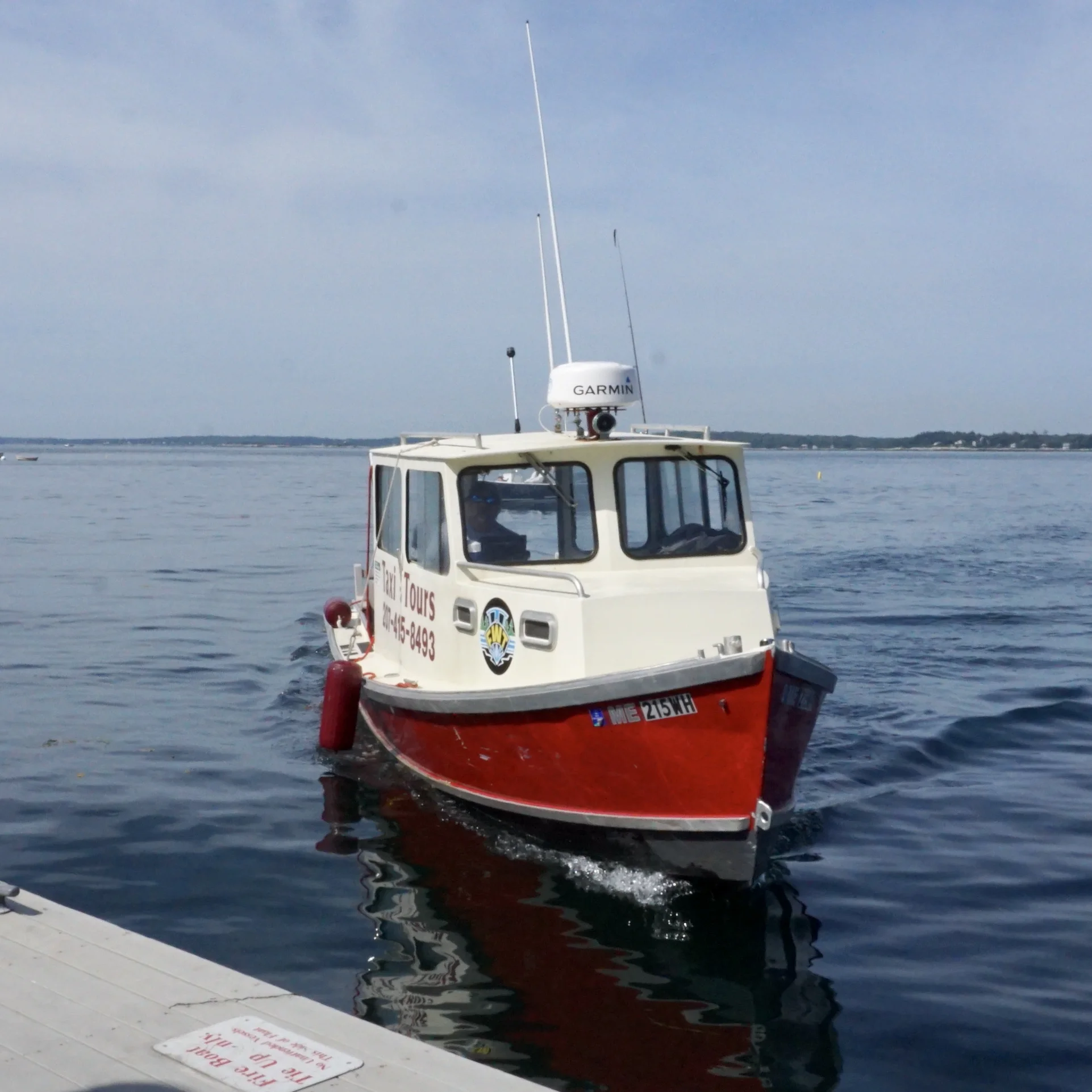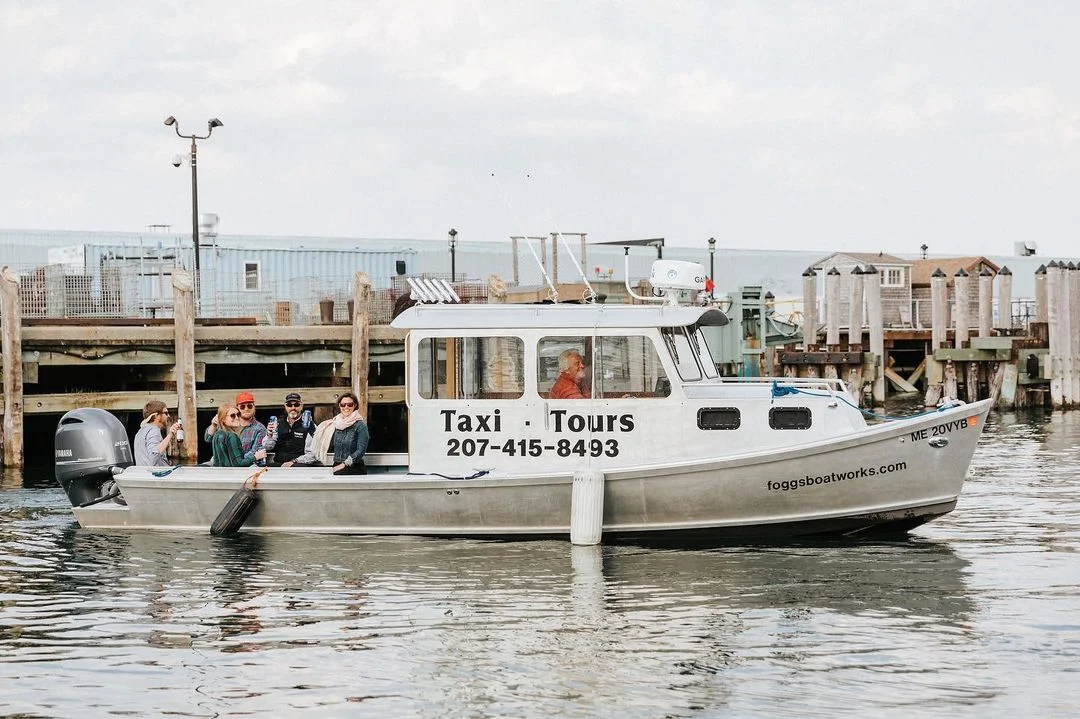Our Services
We offer transport for everyone! From getting to your dinner reservation in Diamond Cove to getting home after a late flight we will help get you where you're going.
Explore our Water Taxi page to plan your island adventure or check out our Events page to reserve your spot on one of our public charters. Alternatively, experience the bay in style with one of our private charters, tailor-made for your special events and gatherings. Let Fogg's Water Taxi Services create unforgettable memories on the sparkling waters of Casco Bay. Book your trip today!


Christmas Parade of Lights Cruise
Experience the Parade of Lights aboard the Casco Bay Cat!
Join Fogg’s Water Taxi & Charters for a festive holiday cruise as we participate in Portland’s annual Parade of Lights. Mrs. Claus will be on the radio, directing all participating boats and guiding us into the parade route.
Enjoy complimentary hot chocolate and cookies while we enjoy Portland harbor's winter wonderland. The Casco Bay Cat is a BYOB vessel, so feel free to bring your own beverages to add some extra holiday cheer.

Diamond Cove
Diamond Cove is a great choice for date night or a memorable dinner on the bay. Boasting two outstanding restaurants and a welcoming hotel, it offers something for everyone. To cap off your visit, book your return at sunset for an unforgettable view.
About Fogg's Water Taxi
We offer seamless transportation to the picturesque islands of Casco Bay with our fleet of handcrafted boats. As the turquoise waters embrace you, the warm hospitality of our local crew leaves you feeling like part of the family. With a deep-rooted connection to the bay and a dedication to preserving its natural beauty, we offer an authentic Maine experience.
Why We're Portland, Maine's Best Water Taxi
Expertise & Experience: With decades in the business, our captains hold a wealth of maritime knowledge, ensuring safe and comfortable journeys.
Competitive Rates: We believe quality shouldn't compromise affordability. Our pricing structure is designed to offer the best value on the bay.
Wide Range of Services: Whether you're looking for a scenic island tour, a last minute taxi ride, or a bespoke private charter, we offer service tailored to your needs.
Stellar Reputation: Our legacy in Portland speaks volumes. Fogg's is synonymous with reliability and excellence, a reputation built on impeccable service.
Exceptional Customer Service: We prioritize our passengers. From the moment you book with us to when you step off our vessel, expect a seamless experience with a friendly crew ready to assist.
State-of-the-Art Fleet: Safety is paramount. Our handcrafted boats are equipped with state-of-the-art safety and navigation systems, ensuring you reach your destination timely and securely.
What Our Customers Say
Midday on the Bay was the perfect amount of time on the water for all of us. Our kids loved it. It was also great talking with the captain and learning a bit more about the area. Highly recommended!
We had such a great time on the Beer, Wine, and Oysters cruise! They had unlimited drinks and oysters for our 2hr cruise around the bay. Great sights and met a really nice family that we chatted with for a while. If you’re hesitant for any reason, just book it! You will 100% enjoy your time. The Joseph S. Kennedy is a really cool boat with a great historical background.
Foggs is fantastic! Made it from Portland to Diamond Cove in no time. Staff is friendly and courteous - we will always use Foggs for our water taxi needs!


